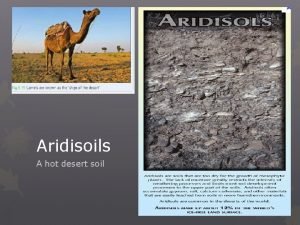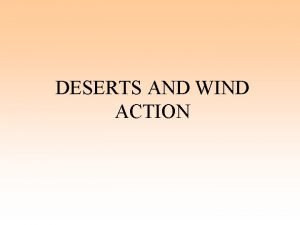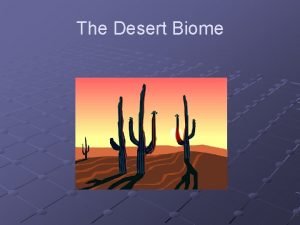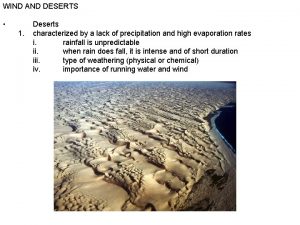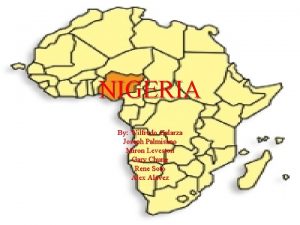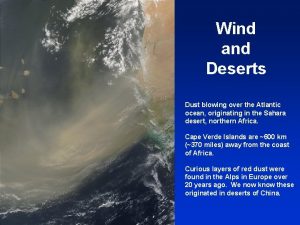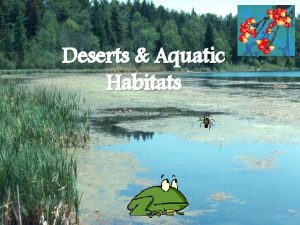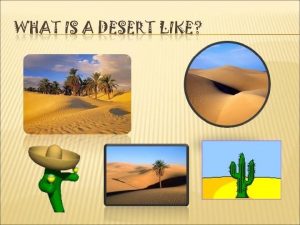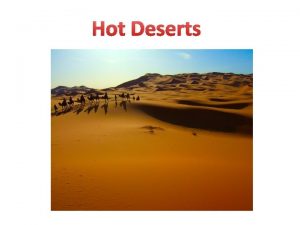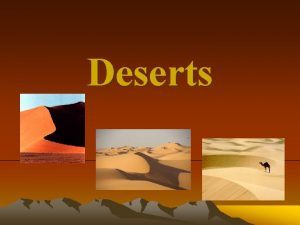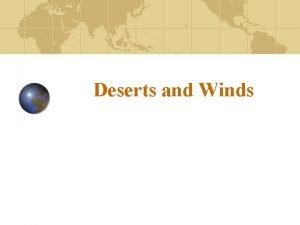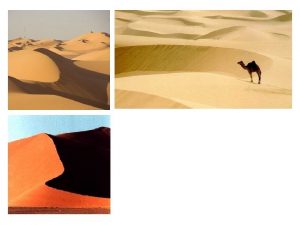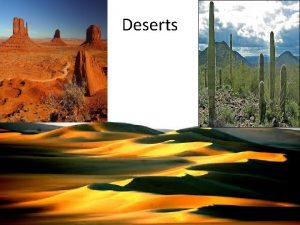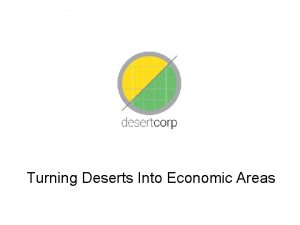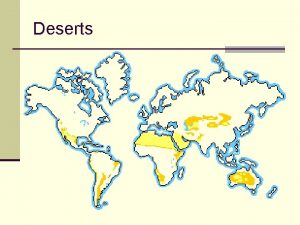Deserts Formation of a Desert Dry areas created














- Slides: 14

Deserts

Formation of a Desert • Dry areas created by global circulation patterns of wind and water. • Independent of latitude, longitude or elevation. • Exist on Venus and Mars as well as Earth.

What is a desert? An area that has… … at least 12 consecutive months without rainfall and less that 500 millimeters (20 inches) of precipitation per year. Compared to Raleigh… … which has 46. 55 inches of rainfall in an average year. Compared to a rainforest… … which has 80 inches of rainfall in an average year.

Types of Deserts Trade Winds Deserts • Caused by hot, dry winds near the equator. • Most of the world’s major deserts. • EX: Sahara (Africa) Mid-latitude Deserts • Occur north or south of the subtropical high pressure zones. • Form far from oceans. • EX: Sonoran (N. America)

Types of Deserts Rain Shadow • As air rises over the mountains the precipitation falls on the “windward”/ shadow side. • EX: Great Basin (N. A. ) Coastal • Found on the western edges of continents near the tropics. • Created by cold currents running parallel to the coast. • EX: Namib and Atacama

Types of Deserts Monsoon • Seasonal deserts due to variations in temperature between the oceans and the continents. • EX: Thar (Pakistan) Polar • Temperatures of less than 10*C and precipitation less than 250 mm. • Some have snow dunes. • EX: Dry Valleys of Antarctica


Desertification

Desertification • The gradual transformation of habitable land into desert; is usually caused by climate change or by destructive use of the land. • The rate is increasing due to human activity.

The Causes • • • Drought Overgrazing overuse of groundwater Overpopulation Deforestation Global climate change The Dust Bowl

Possible Solutions • Change to human activities (required by national and international laws) including… • Water conservation, • Improved farming practices , • Modification of water use, • Smart planting to prevent erosion and increase soil fertility.

Africa: Showing the Sahel SAHEL

• The Sahel is an ecoclimatic and biogeographic zone of transition in Africa between the Sahara to the north and the Sudanian Savanna to the south. Having a semi-arid climate, it stretches across the south-central latitudes of Northern Africa between the Atlantic Ocean and the Red Sea. • The word Sahel means coast or shore. The Sahel is on the “coast” or “shore” of the Sahara desert. • Droughts and Mega droughts (one lasting 250 years) along with overgrazing caused the area to “die” • There was famine, people were starving, ill, and suffering respiratory distress.

Sahel Dynamics • The Sahel is considered a transition zone between the desert in the north and the wet savannahs in the south. The climate is semi-arid. • The northern region of the Sahel can receive up to 4 inches of rain per year and in the southern region it can receive less than 24 inches of rain per year. • During the drier seasons the grasslands in the Sahel burn • The Sahel does not have a strong economy because vegetation does not grow well here.
 The soldier decided to desert his dessert in the desert
The soldier decided to desert his dessert in the desert A strip of land that divides the desert from wetter areas
A strip of land that divides the desert from wetter areas Desert soil formation
Desert soil formation Random laid web formation
Random laid web formation How were deserts formed
How were deserts formed Ancient china map taklamakan desert
Ancient china map taklamakan desert Desert average temperature
Desert average temperature What are deserts
What are deserts Adaptation of cactus
Adaptation of cactus Mohabbi desert
Mohabbi desert Deserts
Deserts Food deserts in minnesota
Food deserts in minnesota Nigerian deserts
Nigerian deserts Characteristics of deserts
Characteristics of deserts How are deserts formed
How are deserts formed


